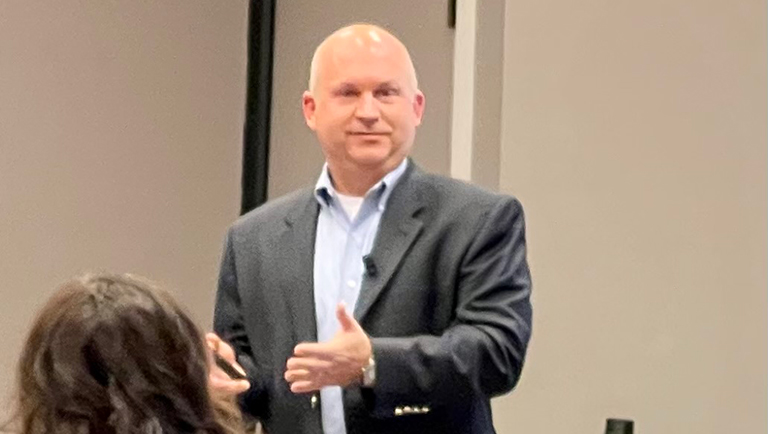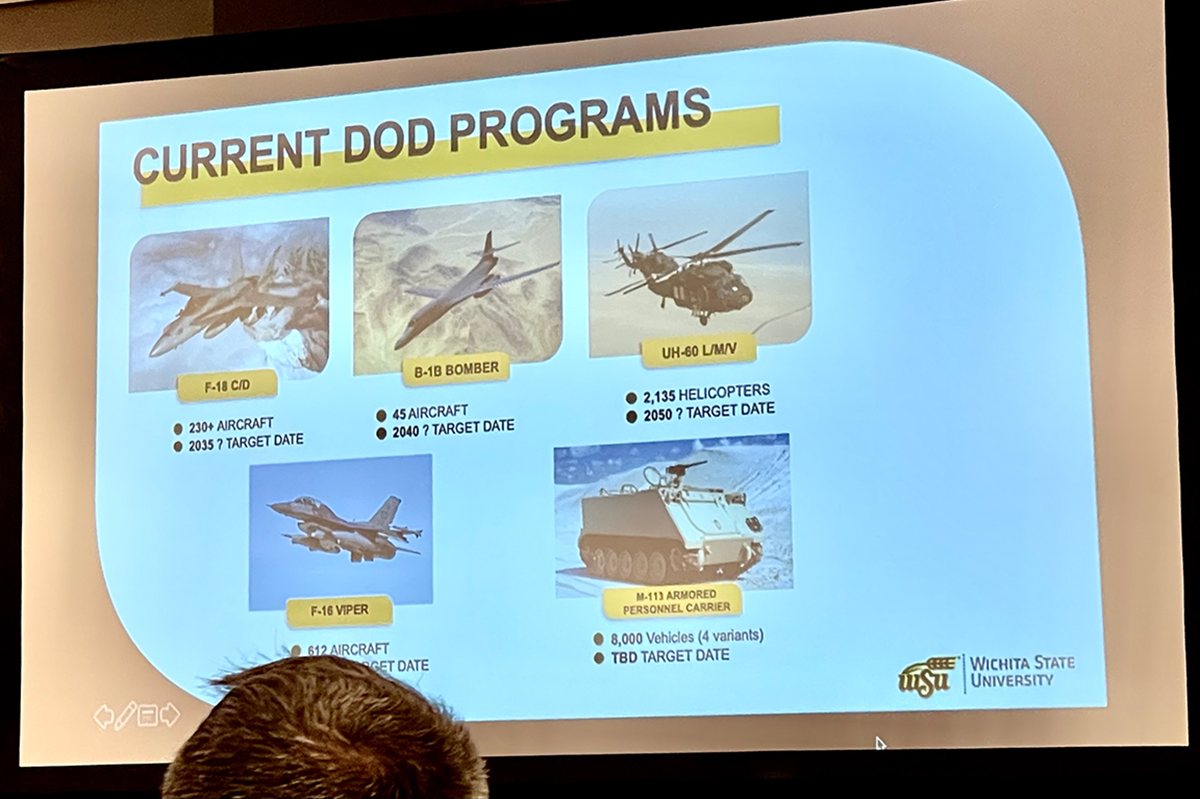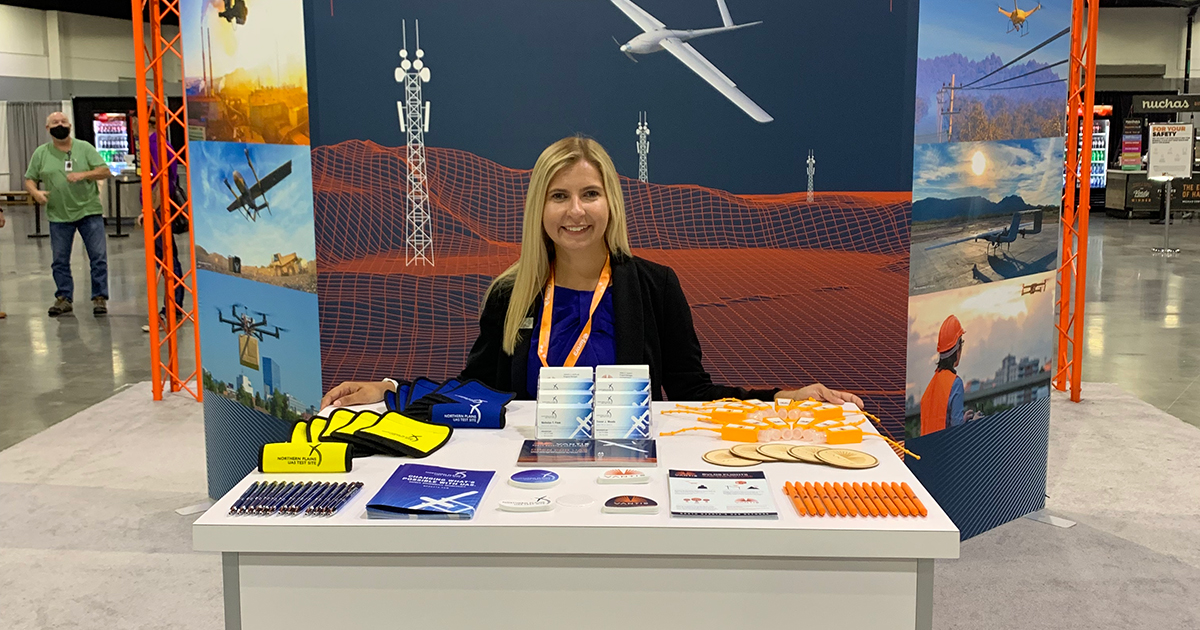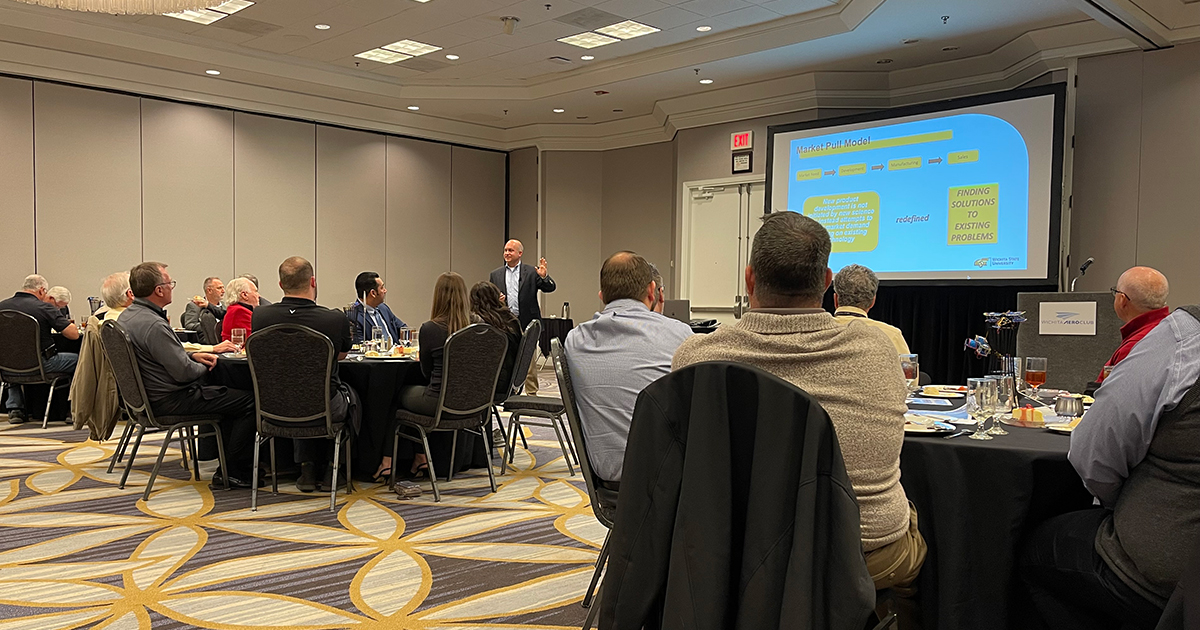Tomblin Reaches for the Stars
The Air Capital brims with movers and shakers, but I can’t imagine anyone with the pedal-to-the-medal speed or quick-response agility of Dr. John Tomblin. He melds common sense problem-solving with indisputable genius. The Air Capital is a beneficiary. So am I. (More about that in a bit.)
The December gathering of the Wichita Aero Club featured Tomblin, who serves as senior vice president for industry and defense programs at Wichita State University (WSU) and as executive director of the National Institute for Aviation Research (NIAR). He also serves as a distinguished professor of aerospace engineering.

Tomblin oversees 18 NIAR labs encompassing 1.6 million square feet, 1,000 team members, six locations and a budget of nearly $200 million. His leadership has helped NIAR achieve worldwide prominence in composites and advanced materials, triple its annual funding, and expand both its capabilities and its footprint. NIAR stands out as the nation’s largest academic aviation research and development institution.
NIAR’s work for the U.S. Department of Defense (DoD) makes it a key player in advanced materials and structural concepts for automated manufacturing, rapid sustainment of legacy aircraft and emerging materials for missile-applications. It also supports multiple programs from DoD industrial suppliers and original equipment manufacturers (OEMs).
The Magic of the Model
Tomblin’s December 8 presentation focused on innovation in industry and defense programs. While most basic research universities operate under a technology push versus market pull equation that emphasizes the push part, NIAR focuses on the pull. Customers such as Spirit AeroSystems and the DoD come to NIAR with defined problems. NIAR then provides the solution with a viable market strategy. “I can reverse engineer anything,” Tomblin says.

He’s proved it, too. Just last year, NIAR took home the gold in the U.S. Air Force’s inaugural Advanced Manufacturing Olympics, a worldwide competition to discover new technologies and insights. NIAR validated its digital-twin development expertise through this monumental win.
Creating digital twins is a solution to parts obsolescence that have put aircraft mission capabilities rates at historic lows. Tomblin visited Tinker Air Force Base in July 2019 and, examining one month of data, found that the non-existence of a digital 3-D model was one of the primary reasons for 460 no-bid items. Tomblin understood that developing a digital twin would enable rapid parts design, manufacturing and deployment, getting aircraft flying again.
In November, NIAR partnered with General Electric (GE) to boost 3-D printing with metals. Tomblin said NIAR essentially goes from metal to digital with the digital twin, then back from digital to metal parts.
The Benefits of Applied Learning
NIAR also offers life-changing, applied-learning opportunities for students. That’s where I come in. In 2017, I was one of the few non-engineering, applied-learning students at NIAR. As an undergraduate senior, I was placed at Airbus Americas Engineering to support a six-month business-development project. Those months turned into a year, and I found myself graduating, pursuing a master’s degree and diving deeper into new roles at Airbus. After two and a half years there, an MBA in hand, I joined Greteman Group, proving the success of the applied learning model and the benefits of growing your own. I’ll soon be entering my third year working at an aviation-focused agency in the Air Capital. I love it. Tomblin is helping attract more young talent like me.

By strategically targeting the I-35 and I-70 corridors and treating those prospective students as Kansas residents, Tomblin says Wichita State draws from 30.8 million people, making it the second-largest recruiting pool in the United States. Since the launch of the WSU Innovation Campus, where NIAR resides, Tomblin showed their grants had grown from $54 million to $180 million a year and the annual student payroll is $27 million. The ratio has become a bit more balanced today, too, since my applied-learning days. Tomblin says roughly 70% of the I-corridor-recruited, applied-learning students enroll in engineering.
Tomblin’s presentation deck showed a quote from WSU President Rick Muma, “As a public urban research university, we need to be on the forefront of problem solving for the public and industry.” That’s a big, bodacious vision, but one NIAR’s helping realize.
Pushing the Boundaries of Digital Innovation
Tomblin took questions from Aero Club members at the close of his presentation. But he didn’t answer them all. One that he declined was about Blue Origin, founded by Jeff Bezos, and United Launch Alliance, led by Tory Bruno. Wichita’s large number of aerospace suppliers positions us to undertake defense and commercial aerospace manufacturing. In October, Blue Origin announced multiyear contracts with four Wichita suppliers, and in November, CEO Tony Bruno came to Wichita to look us over. He made statements about creating Wichita supplier partnerships that could create jobs with payrolls in the millions. Will NIAR be playing a role? Tomblin wasn’t ready to talk about that.

Telling the Air Capital’s Story
Visitors to our city are almost always surprised and in awe of what has happened here, Tomblin says – through Boeing Wichita, Cessna and Beechcraft – to what’s happening today through NIAR, Spirit and Textron Aviation. For example, NIAR and Spirit’s joint National Defense Prototype Center is working to create a scalable prototype for hypersonic weapons, which travel at five times the speed of sound and change course en route.
Lockheed Martin told Tomblin it is designating WSU a Tier 1 institution. Yet, Tomblin acknowledges that the Air Capital continues to be a best-kept secret.
Let’s change that.